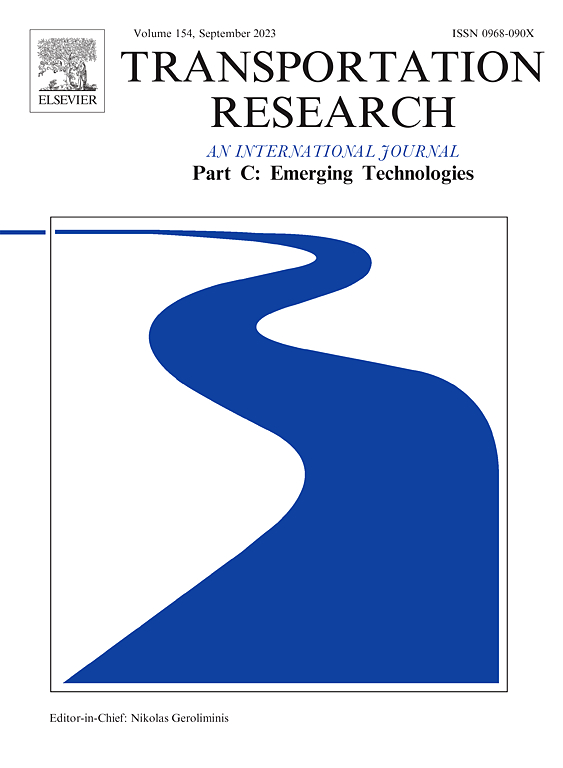i-CLTP: Integrated contrastive learning with transformer framework for traffic state prediction and network-wide analysis
IF 7.6
1区 工程技术
Q1 TRANSPORTATION SCIENCE & TECHNOLOGY
Transportation Research Part C-Emerging Technologies
Pub Date : 2025-02-01
DOI:10.1016/j.trc.2024.104979
引用次数: 0
Abstract
Traffic state predictions are critical for the traffic management and control of transport systems. This study introduces an innovative contrastive learning framework coupled with a transformer architecture for spatiotemporal traffic state prediction, designed to capture the spatio-temporal heterogeneity inherent in traffic. The transformer structure functions as the upper level of the prediction framework to minimize the prediction errors between the input and predicted output. Based on the self-supervised contrastive learning, the lower level in the framework is proposed to discern the spatio-temporal heterogeneity and embed the latent characteristic of traffic flow by regenerating the augmentation features. Then, a soft clustering problem is applied between the upper level and lower level to category the types of traffic flow characteristics by minimizing the joint loss across each cluster. Subsequently, the proposed model is evaluated through a real-world highway traffic flow dataset for bench marking against several latest existing models. The experimental results affirm that the proposed model considerably enhances traffic state prediction accuracy. In terms of precision metrics, the model records a Mean Absolute Error of 13.31 and a Mean Absolute Percentage Error of 7.85%, reflecting marked improvements of 2.0% and 14.5% respectively over the latest and most competitive baseline model. Furthermore, the analysis reveals that capacity of the proposed method to learn the cluster patterns of spatio-temporal traffic dynamics reflected by calibrated fundamental diagrams.
求助全文
约1分钟内获得全文
求助全文
来源期刊
CiteScore
15.80
自引率
12.00%
发文量
332
审稿时长
64 days
期刊介绍:
Transportation Research: Part C (TR_C) is dedicated to showcasing high-quality, scholarly research that delves into the development, applications, and implications of transportation systems and emerging technologies. Our focus lies not solely on individual technologies, but rather on their broader implications for the planning, design, operation, control, maintenance, and rehabilitation of transportation systems, services, and components. In essence, the intellectual core of the journal revolves around the transportation aspect rather than the technology itself. We actively encourage the integration of quantitative methods from diverse fields such as operations research, control systems, complex networks, computer science, and artificial intelligence. Join us in exploring the intersection of transportation systems and emerging technologies to drive innovation and progress in the field.

 求助内容:
求助内容: 应助结果提醒方式:
应助结果提醒方式:


